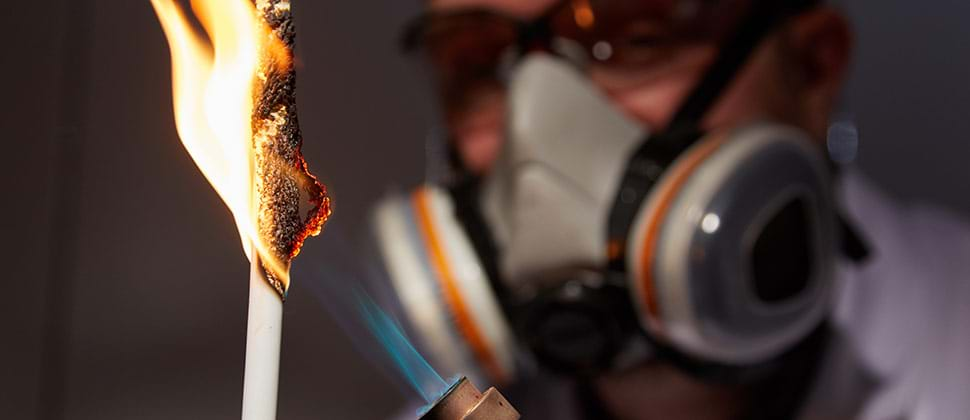
NewsInformation Center
When should the flammability test be done?
2023/09/18
The flammability test should be done during the product development and manufacturing process. It is typically conducted to assess the fire resistance and safety of materials used in various products, such as textiles, furniture, and electronics. The test helps ensure that the materials meet the required flammability standards and regulations before they are introduced into the market. It is important to conduct the flammability test early in the production process to identify any potential fire hazards and make necessary modifications to enhance the safety of the final product.
In this response, I will discuss the importance of flammability testing, the different stages at which it should be performed, and the specific considerations for various industries.
Introduction:
Flammability testing is a critical aspect of product safety evaluation, especially for items that are prone to catching fire or supporting combustion. It involves subjecting materials or products to controlled fire conditions to assess their ignition, flame spread, and burning characteristics. By conducting flammability tests, manufacturers can identify potential fire hazards, make informed design decisions, and ensure compliance with relevant safety regulations.
Stage 1: Research and Development:
The first stage at which flammability testing should be considered is during the research and development phase. This early testing helps identify the flammability properties of different materials and guides the selection of fire-resistant components. By understanding the flammability characteristics of materials, manufacturers can make informed decisions about their suitability for specific applications. This stage is crucial for industries such as textiles, furniture, and electronics, where flammable materials can pose significant risks.
Stage 2: Prototyping:
Once the initial research and development phase is complete, the next stage is prototyping. At this stage, manufacturers create functional prototypes of their products using the chosen materials. Flammability testing should be conducted on these prototypes to assess their fire resistance and ensure compliance with safety standards. This step allows manufacturers to identify any potential fire hazards early in the design process and make necessary modifications to improve the product's safety.
Stage 3: Pre-production:
Before mass production begins, flammability testing should be performed on pre-production samples. This stage involves subjecting a representative sample of the final product to rigorous fire tests to evaluate its performance under various fire scenarios. The goal is to ensure that the product meets the required safety standards and does not pose a significant fire risk to users or the environment. Pre-production flammability testing helps manufacturers identify any design flaws or material issues that may affect the product's fire resistance.
Stage 4: Quality Control:
Flammability testing should also be integrated into the quality control process during mass production. Regular sampling and testing of finished products help ensure consistent fire resistance and compliance with safety regulations. By implementing robust quality control measures, manufacturers can identify any deviations from the desired flammability standards and take corrective actions promptly. This stage is crucial for industries such as automotive, aerospace, and consumer electronics, where large-scale production can lead to variations in product quality.
Stage 5: Post-production and Certification:
Even after the products have been manufactured and released into the market, flammability testing remains important. Regular post-production testing helps monitor the ongoing compliance of products with safety standards and regulations. Additionally, obtaining third-party certifications, such as UL (Underwriters Laboratories) or ASTM (American Society for Testing and Materials), can provide further assurance to consumers and regulatory bodies about the product's fire safety. These certifications often require periodic flammability testing to maintain compliance.
Considerations for Different Industries:
Different industries have specific flammability testing requirements based on the nature of their products and the potential fire risks associated with them. Here are a few examples:
1. Textiles and Apparel: Flammability testing for textiles and apparel is crucial due to the risk of clothing catching fire. Testing methods such as the Vertical Flame Test (ASTM D6413) or the Horizontal Flame Test (ASTM D6413) are commonly used to evaluate the flammability of fabrics and garments.
2. Furniture: Furniture, especially upholstered items, can be highly flammable. Testing methods like the California Technical Bulletin 117 (TB117) or the Furniture and Furnishings (Fire Safety) Regulations are used to assess the fire resistance of furniture materials and components.
3. Electronics: Flammability testing is essential for electronic devices to ensure their safe operation and prevent fire hazards. Standards such as UL 94 or IEC 60695 outline specific tests to evaluate the flammability of plastic materials used in electronic products.
Conclusion:
Flammability testing should be conducted at various stages of product development and manufacturing to ensure safety, compliance, and the prevention of fire hazards. From the research and development phase to post-production monitoring, flammability testing plays a crucial role in identifying potential fire risks, making informed design decisions, and ensuring the safety of products across different industries. By prioritizing flammability testing, manufacturers can enhance product safety, protect consumers, and maintain regulatory compliance.
Flammability testing should be conducted early in the product development process and throughout various stages, including design, material selection, prototype testing, and production. It is important to adhere to relevant safety regulations and standards to ensure the product's fire safety and minimize any potential risks.
Previous: What is the test for water proof fabric?
N e x t : What is the vertical flammability test method?





